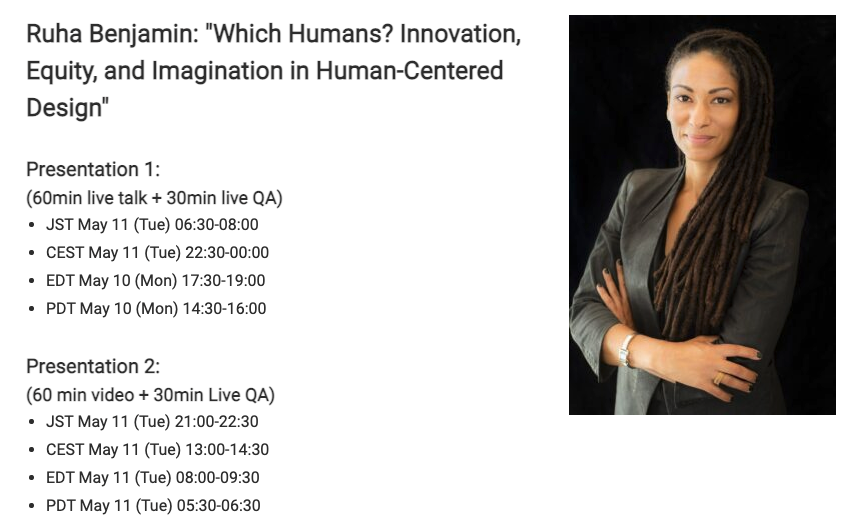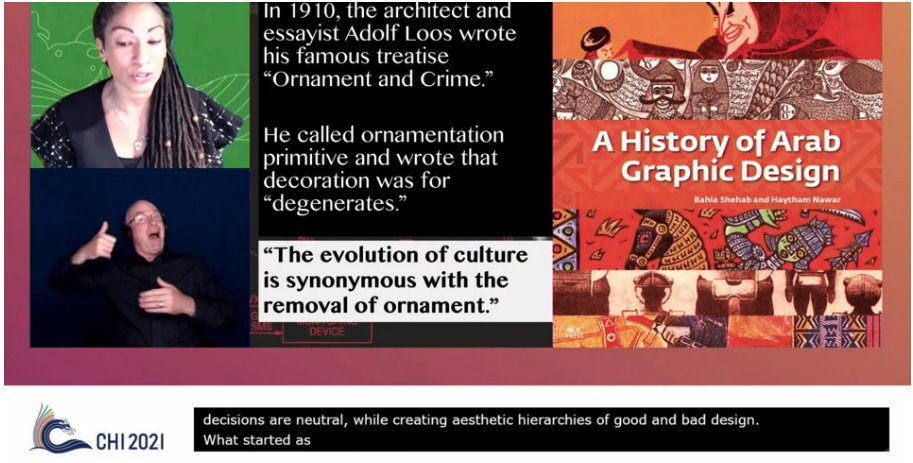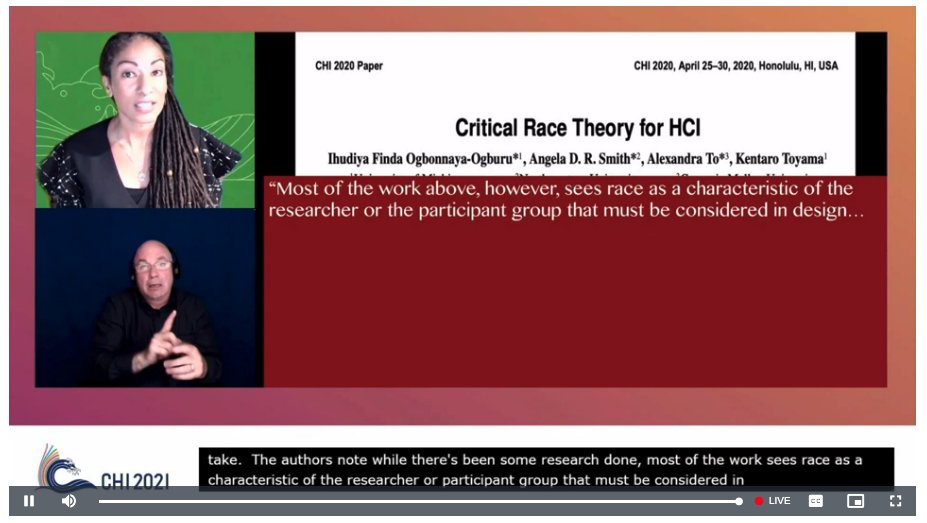Excited for the 2nd #chi2021 keynote, by Ruha Benjamin on Innovation, Equity, and Imagination in Human-Centred Design. I& #39;ll be watching and live tweeting from the 2nd showing starting in 5mins. follow this  https://abs.twimg.com/emoji/v2/... draggable="false" alt="🧵" title="Thread" aria-label="Emoji: Thread"> if you want to see more.
https://abs.twimg.com/emoji/v2/... draggable="false" alt="🧵" title="Thread" aria-label="Emoji: Thread"> if you want to see more.
Here we go - @aquigley introduces @ruha9 , from Princeton University, and her international background on speaking on topics of innovation and equity. She& #39;s working on her next book, Viral Justice. #chi2021
Ruha takes us back to the start of the pandemic, well March 2020, where she would read online stories to people in fancy dress. And she got zoombombed by a naked-ish man, and using racial slur. #chi2021
As zoombombing became more well known it became apparent that groups were coordinating on social media sites, sharing zoom meetings they can invade. It wasnt that zoom was being malicious, but their desire for frictionless interaction made it possible #chi2021
Does frictionless UX hide social frictions? Does it encourage us to skip deeper reflection and context? She now refers to a philosopher (sorry missed it) that technology is often designed for the representative human, and the representative human is typically man.
Harm to others can be an afterthought. She nods to @adapperprof and Dillahunt for their CHI2021 paper on this. #chi2021
Ruha nods to Cheryl D Miller who asked - what is the & #39;conferedate monument& #39; in our design processes? #chi2021 She concludes the white space of design reflects the white space of design, which reinforces if we& #39;re not aware of it.
She asks: How can we denaturalise racist hierarchies? We need to move beyond old ways, when old ways are written in times of imbalance. #chi2021
Note: I (Max) am wondering how much of my unconscious bias is coming out in my white man live-tweets of this keynote given by an african american leader.
Shes talking now about histories we CAN learn from to get away from historic prevalence. Including a history of arab graphic design. She nods to another #CHI2021 that argues that minimalism hides complexity. the simple food app hides the gig economy behind it.
She now nods to a 2019 paper, which asked - how much do we hide workings racism in our design. #chi2021
The ways forward: 1) focus on everyday practices & pedagogy, instead of teaching how we& #39;ve always done it. critique what we teach. 2) move beyond tokenistic or predatory inclusion. e.g. Plantations were diverse, but violent. #chi2021
3) Prioritise process, not the endpoint. Its not the non-racist product, its the way the process started, and who was involved. She now cites the critical race theory CHI paper from #chi2020. #chi2021
She notes that most of us work without realising how much we dont really understand racism and other equalities. It should not be a niche topic in HCI, but embedded in practice. #chi2021
Ruha: Unless you are harmed by racist systems, you miss the harm caused by the minimalism hiding the complexity. #chi2021
Next, that technical innovation does not >> to social improvement. To understand why people wanted robot slaves in the 1960s, you have to understand who wanted this new technology innovation, and who would get such technology (if it happened) - who is the imagined user? #chi2021

 Read on Twitter
Read on Twitter if you want to see more." title="Excited for the 2nd #chi2021 keynote, by Ruha Benjamin on Innovation, Equity, and Imagination in Human-Centred Design. I& #39;ll be watching and live tweeting from the 2nd showing starting in 5mins. follow this https://abs.twimg.com/emoji/v2/... draggable="false" alt="🧵" title="Thread" aria-label="Emoji: Thread"> if you want to see more." class="img-responsive" style="max-width:100%;"/>
if you want to see more." title="Excited for the 2nd #chi2021 keynote, by Ruha Benjamin on Innovation, Equity, and Imagination in Human-Centred Design. I& #39;ll be watching and live tweeting from the 2nd showing starting in 5mins. follow this https://abs.twimg.com/emoji/v2/... draggable="false" alt="🧵" title="Thread" aria-label="Emoji: Thread"> if you want to see more." class="img-responsive" style="max-width:100%;"/>





